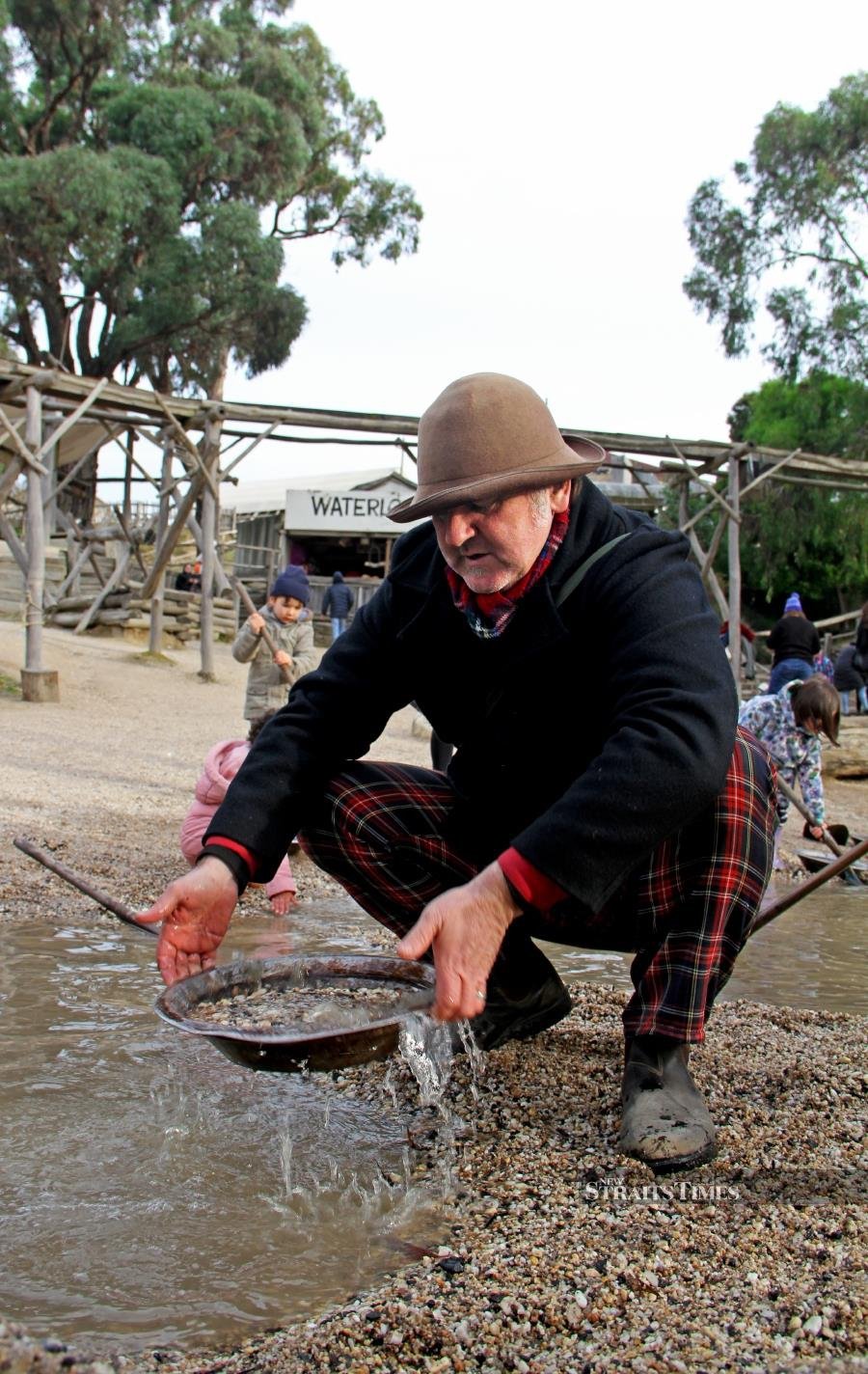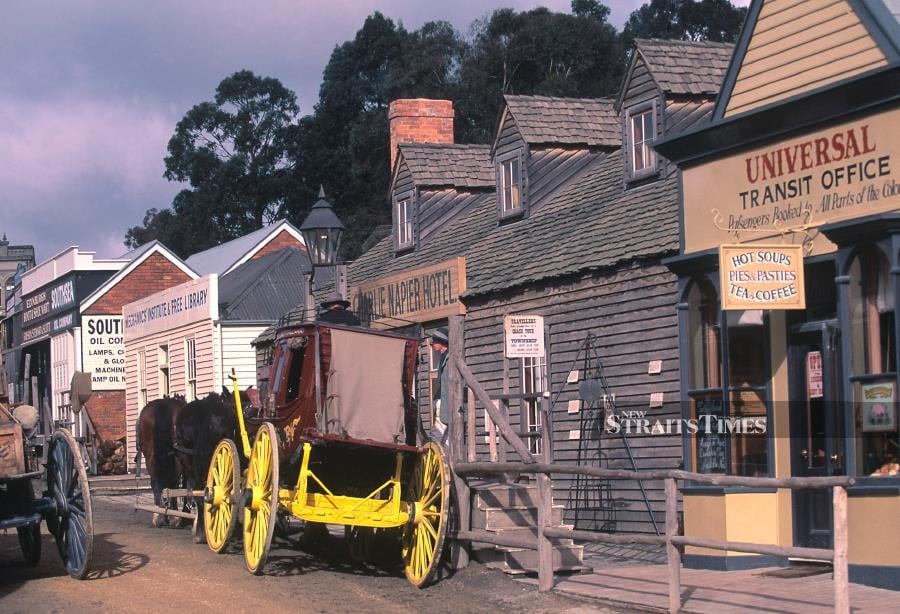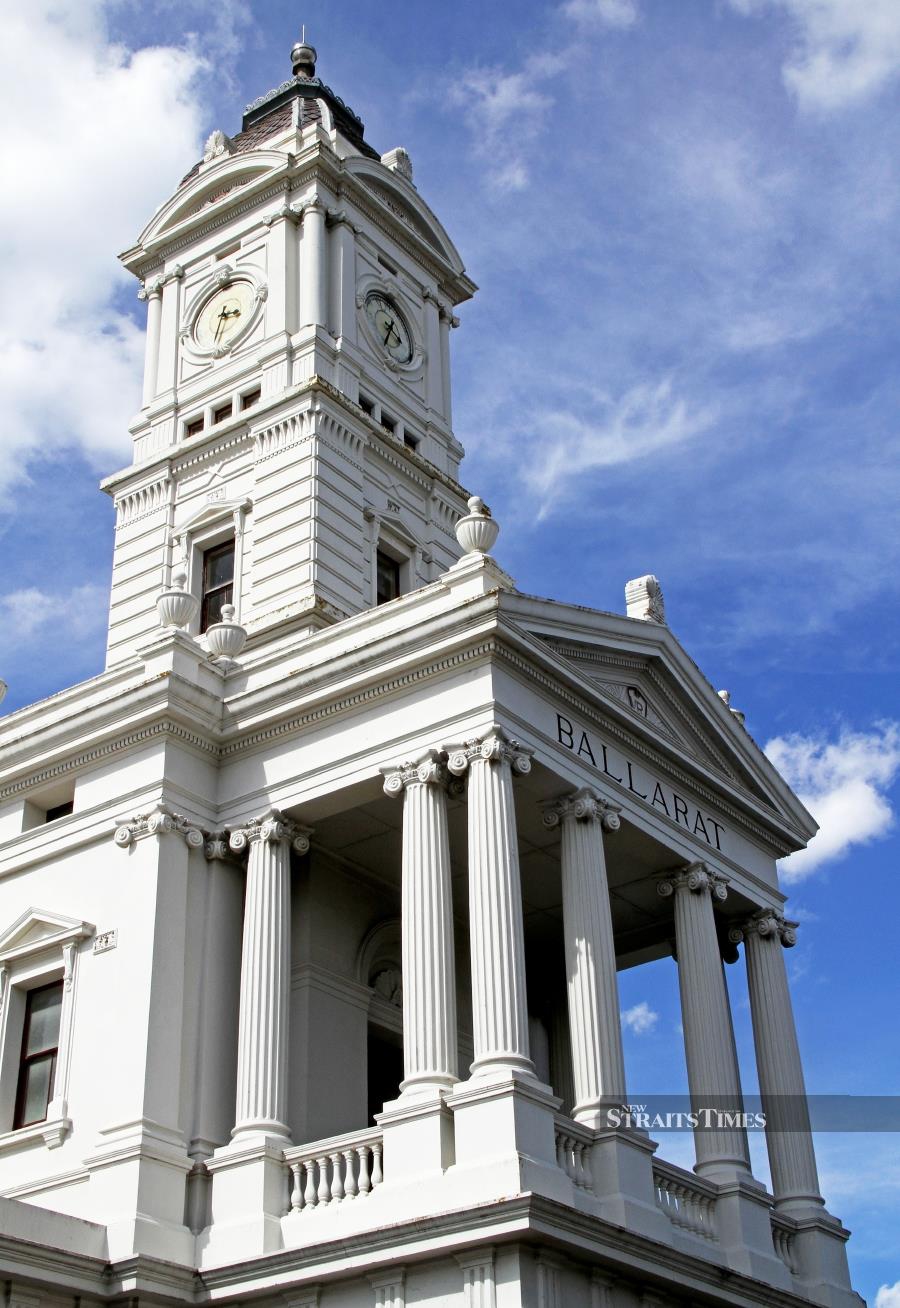A former gold rush forged the city of Ballarat in Melbourne, Australia. Now, it attracts tourists interested in learning about those historic days, writes David Bowden
I SHOULD have known better when the guide said that I could keep any gold I were to discover.
Of course, after an hour of relentless panning, it turns out to be fruitless. There is no gold. And I'm sure if anyone should discover a substantive amount, the area would be sealed off and gold claims staked out.
In fact, they do place small flecks each day to maintain the interest of young children who eagerly engage in panning for gold.
It's not that gold hasn't been claimed from the river but it's mostly been depleted these days. In its place is one of the most interactive and exciting tourist destinations in Australia.
Sovereign Hill in the Victorian city of Ballarat is a replica of a gold mining village that dates back to the mid-19th century when Australia's first gold rush started.
Gold is the world's oldest yardstick for wealth and it has traditionally been used as the standard by which most other valuable commodities have been measured and assessed.
While gold may not be the most expensive metal, it has a tradition of having been used as a standard for longer than other precious metals.
Throughout history, precious metals like gold, silver and, more recently, platinum have been used in exchange for goods and services.
Gold has also provided stability for global currencies and is still used to settle many international trade deals.
In the 19th century, gold fever captured global attention and the many "rushes" started when news of a gold rush spread relatively quickly throughout the world as more discoveries were made.
Names of obscure places entered the vernacular as eager adventurers sought a passage for distant lands and the opportunity to share in the wealth in dusty towns with "streets lined with gold".
Gold was unearthed in California, USA and then in Victoria, Australia. Subsequent rushes occurred in South Africa and New Zealand while the last significant 19th century gold rush was the Klondike in Canada.

ON THE MAP
Shantytowns sprang up overnight in areas adjacent to the diggings but some of them disappeared as quickly as they had sprung up when no gold was found.
In areas of proven gold reserves, towns grew as people flocked there to seek their fortune.
The Australian gold rushes were typical of others as well. In 1851, gold was discovered in Clunes near Ballarat. Within months, over 8,000 miners travelling from as far as England, California and China, arrived in what was then a tranquil rural setting.
Within 12 months, the population grew to 30,000 and by 1855, there were 100,000 miners in the Victorian goldfields.
They were like locusts swarming over the land in an effort to stake out their claim.
Initially, makeshift dwellings and supply shops emerged with few having time for fineries, airs and graces.
However, over time, these townships developed a degree of stability and law and order were established. Many fine buildings followed from the money generated from gold.
So important was gold in this part of the world that when Mark Twain visited Ballarat in 1895 he commented: "It was as if the name Ballarat had suddenly been written on the sky, where all the world could read it at once."
Towns like Ballarat and Beechworth now attract tourists interested in learning more about these historic days.
Old gold mining buildings have been incorporated into Ballarat's premier tourist attraction Sovereign Hill, a fascinating reconstruction of an 1860s gold mining town.

LIVING MUSEUM
In addition to the mine, there are shops along the main street as well as a post office, school, blacksmith shop and hotels.
Sovereign Hill operates as a working and authentic 19th century township. Schoolchildren often visit, stay and live like they would have in the 1860s, including wearing the clothing of the era.
Visitors can pan for their own gold and keep the samples should they be lucky enough to find a speck or two.
While visitors desperately look into the bottom of their gold pan for a shining speck, they can reflect upon the "Welcome Stranger" — the world's second largest gold nugget, weighing in at a staggering 69kg of 99 per cent pure gold, that was discovered here during the gold rush.
In 1869, the world-famous and largest surface nugget ever unearthed was found in Moliagul near Ballarat (estimated to be 71.1kg).
Gold is still being found but not in the same proportions with the 27.2kg "Hand of Faith" unearthed in 1980 before being sold to the Golden Nugget Casino in Las Vegas.
This living museum is a fascinating and educational destination for families, especially kids who will run around eagerly seeking out the old-fashioned facilities, machinery and displays.
Gold-pouring demonstrations are popular and visitors can watch as a 3kg bullion bar is produced from molten gold.
There are regular displays in all the buildings and stagecoaches ferry visitors to the various activities across the 25ha site.
There's even a replica of the Eureka Stockade where one of Australia's first stands of defiance against the authorities was staged in 1854 with 22 miners being shot by the soldiers.
In winter, the site becomes a winter wonderland of lights, made dramatic by snow being created in the crisp air and sprayed over the site much to the excitement of the young visitors.
Using some kaleidoscopic and artistic lighting, the historical buildings take on a whole new persona after dark.

HISTORIC STREETSCAPE
Ballarat is an historic city with many prestigious buildings that reflect the wealth generated from gold within the community.
Perhaps the finest buildings of all are the Gold Exchange on Lydiard Street South, the Town Hall and the Railway Station.
Ballarat's central business district is compact and well worth exploring on foot. Its grand architecture reflects a town built on gold and the Art Gallery of Ballarat has arguably Australia's best regional collection of local art ranging from 1887 to the contemporary era.
Some of the other grand buildings in the city include Her Majesty's Theatre, Regent Theatre and the old post office (now the Federation University and Ballarat's significant second art gallery). Her Majesty's Theatre, opened in 1875, is acknowledged as Australia's best-preserved theatre building.
Another grand building of interest is Craig's Royal Hotel on Lydiard Street, where Prince Alfred, Duke of Edinburgh, stayed in 1867 on what was the first visit to Australia by a member of the royal family.
Ballarat makes a great base to discover other towns in the area, such as Bendigo, Maldon, Clunes, Castlemaine, Maryborough, Stawell or the spa town of Daylesford.
The city has some excellent accommodation and restaurants to make it a great place to visit and stay at least one night. Some even choose to visit from Melbourne in a day and return to the capital in the late afternoon.

TRAIN TOURING
There is more than enough to do in Sovereign Hill and the city warrants an overnight stay. It is my recommendation that the best way to explore the city and the region is to stay a night. I choose the train before hopping on an Uber in Ballarat to access its various attractions.
With its newfound wealth, the residents of Ballarat called upon the government to establish a rail link and work on the Geelong to Ballarat line commenced in 1858.
The broad-gauge line arrived in Ballarat in 1862 and remained as the main rail link to Melbourne until a more direct line between Ballarat and the capital opened in 1889.
Since the trains for Ballarat depart from the Southern Cross Centre in downtown Melbourne, I opt to stay at the impressive Movenpick Hotel Melbourne on Spencer.
This means I could take the Melbourne City Express bus shuttle from the Tullamarine Airport to Movenpick and then the next morning simply walk across the road for the V/Line train to Ballarat. It couldn't have been easier or more enjoyable.
Trains arrive into Ballarat after their 90-minute journey from Melbourne at the grand 19th-century station located on Lydiard North Street.
The station is opposite the impressive The Provincial Hotel Ballarat, my number one choice to stay and dine while in Ballarat.
With just a handful of stylish rooms upstairs, the hotel makes for a memorable stay. I dine on contemporary European cuisine in Lola, the hotel's restaurant downstairs.
Ballarat especially appeals to families with children seeking an educational and interactive experience in regional Victoria.
Stylish and elegant, The Provincial will appeal to discerning travellers seeking refined and intimate accommodation and some excellent dining featuring local produce including fine wines.
How to get there
Ballarat is 110km northwest of Melbourne Airport, colloquially known as Tullamarine Airport, the gateway for most Malaysian travellers. The V/Line trains from Melbourne take 80 minutes to cover the distance. For more information on holidays in Ballarat and Victoria, log on to Tourism Victoria (www.tourismvictoria.com).
Fly economy to Melbourne, Australia with Malaysia Airline Promotion.

